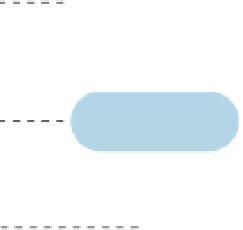Java Reference
In-Depth Information
1 2 3 4 5 6 7 8 9 10
Fig. 5.7
|
do
…
while
repetition statement. (Part 2 of 2.)
Line 8 declares and initializes control variable
counter
. Upon entering the
do
…
while
statement, line 12 outputs
counter
's value and line 13 increments
counter
. Then the pro-
gram evaluates the loop-continuation test at the
bottom
of the loop (line 14). If the condi-
tion is
true
, the loop continues at the first body statement (line 12). If the condition is
false
,
the loop terminates and the program continues at the next statement after the loop.
UML Activity Diagram for the
do
…
while
Repetition Statement
Figure 5.8 contains the UML activity diagram for the
do
…
while
statement. This diagram
makes it clear that the loop-continuation condition is not evaluated until
after
the loop
performs the action state
at least once
. Compare this activity diagram with that of the
while
statement (Fig. 4.6).
Display the
counter value
System.out.printf(
“%d ”
, counter );
Increment the
control variable
++counter
[counter <= 10]
Determine whether
looping should
continue
[counter > 10]
Fig. 5.8
|
do
…
while
repetition statement UML activity diagram.
Braces in a
do
…
while
Repetition Statement
It isn't necessary to use braces in the
do
…
while
repetition statement if there's only one
statement in the body. However, many programmers include the braces, to avoid confu-
sion between the
while
and
do
…
while
statements. For example,
while
(
condition
)
is normally the first line of a
while
statement. A
do
…
while
statement with no braces
around a single-statement body appears as
:






































